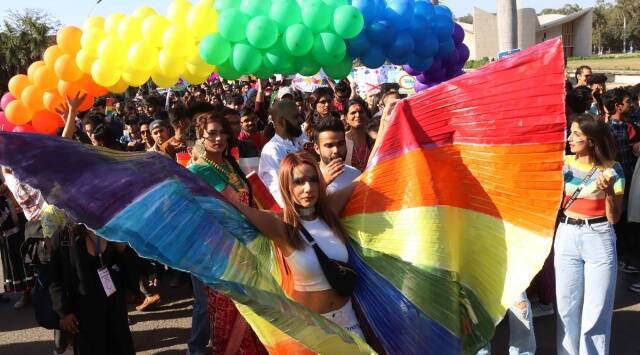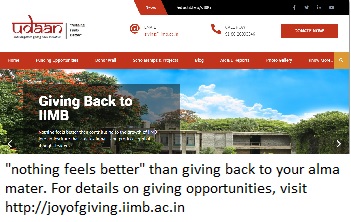Homophobia is a Colonial Legacy – Government Must Break from it Clearly
– Dr. Prateek Raj
Strategy Area, IIM Bangalore
It must think twice before arguing in court that queer people and their dignity and equality would ‘wreak havoc’ in India. It must realise that young queer people need hope — not government-sanctioned humiliation

When the makers of the Indian Constitution enshrined fundamental rights, they probably did not feel the need to explicitly spell out the right to companionship and family. These natural rights are so fundamental that the Constitution-makers did not need to state the obvious. However, I wish they had. It would have saved queer people from many indignities.
Queer people have existed since the dawn of humanity. They are so fundamental to the makeup of society that indigenous cultures and faiths have accepted them matter-of-factly, like any other gender or orientation. The Kama Sutra, a treatise on the private lives of people in Pataliputra in the 3rd century BCE, devoted an entire chapter and more to same-sex relations and courtship and passingly mentioned the customary practice of Parigraha, where two people of the same gender cohabited for life. As there existed no codified sanction of marriage in pre-modern India, all systems of marriage, including Parigraha, were customary.
When Sarmad Kashani, a 17th-century Sufi mystic, fell in love with Abhay Chand, a Hindu man, Chand’s family eventually relented after some protest. They lived and travelled in India together for the rest of their lives. Sarmad’s popularity among locals in Delhi irked Emperor Aurangzeb so much that he was eventually executed. Martyred, one of his most famous poems, reverberates to this day: “There is no fault with a madman/ The fault lies in you/ Love hasn’t maddened you yet.”
As the world became “modern”, an obsession with positivistic classification and gender binaries emerged. Cultures that did not adhere to modern ideals of masculinity and femininity were labelled as savage-like. British imperialists became the prime exporters of the most acute form of homophobia. So vicious was the homophobia in Britain that in 1952 their government prosecuted war hero, genius, and the father of modern computer science, Alan Turing, for his homosexuality and forced him to undergo chemical castration. In 1954, days before he turned 42, Turing committed suicide.
The British showed a willingness to reform, and today, Britain ensures a life of basic equality and dignity for its queer citizens. Yet, the system of laws and attitudes that the British imprinted on their colonies wreaked havoc on the lives of queer people elsewhere. No community bore a greater brunt than India’s Hijra community, targeted under the Criminal Tribes Act 1871, with the movement and freedoms of the community as a whole severely curtailed. While such laws have been removed, the stigma that they brought to the community has not faded away.
Nearly one crore young Indians (15 to 30 years old) are likely to be gay, lesbian, or transgender (roughly 3 percent of the total population aged 15 to 30 – 35 crore), and many more are bisexuals. India’s total queer population is even larger, although most live in the closet, discreetly. They grew up when being gay was a criminal act, facing a world where institutionalised homophobia at all levels of society was normal. While things have improved in the last few years (since Navtej Singh Johar vs.Union of India, 2018), it does not imply that queer people can now live fearlessly. Many challenges still exist, like the structurally imposed isolation that most queer people face daily.
The British showed a willingness to reform, and today, Britain ensures a life of basic equality and dignity for its queer citizens. Yet, the system of laws and attitudes that the British imprinted on their colonies wreaked havoc on the lives of queer people elsewhere. No community bore a greater brunt than India’s Hijra community, targeted under the Criminal Tribes Act 1871, with the movement and freedoms of the community as a whole severely curtailed. While such laws have been removed, the stigma that they brought to the community has not faded away.
Nearly one crore young Indians (15 to 30 years old) are likely to be gay, lesbian, or transgender (roughly 3 per cent of the total population aged 15 to 30 – 35 crore), and many more are bisexuals. India’s total queer population is even larger, although most live in the closet, discreetly. They grew up when being gay was a criminal act, facing a world where institutionalised homophobia at all levels of society was normal. While things have improved in the last few years (since Navtej Singh Johar vs.Union of India, 2018), it does not imply that queer people can now live fearlessly. Many challenges still exist, like the structurally imposed isolation that most queer people face daily.
The government holds the responsibility to ensure the safety and well-being of all its citizens. If the government cannot recognise the full dignity of queer people, it should at least not get in the way of their right to build a family so that they can find support among each other and create a place they call home. Queer people are not asking for more, just for the same rights that everyone else already has.
No government holds the authority to legislate whether a human deserves natural rights. Natural rights like companionship and family are inalienable — above the authority of any man-made institution. So, it is only reasonable that the government and the honourable constitutional bench confirm that the natural rights of queer people to love, companionship, and family cannot be infringed and give the community back the dignity it deserves.
Author: Prateek Raj is a faculty member at IIM Bangalore. He is an economic historian
Source: The Indian Express


